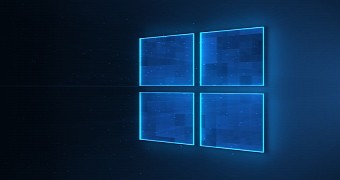Upgrading to and using Windows 10 April 2018 Update has been a crazy adventure for many people out there, and it’s all because of the number of bugs discovered in this latest OS feature release.
Despite being thoroughly tested as part of the Windows Insider program before the public launch, Windows 10 April 2018 Update, also known as Windows 10 version 1803, offers mixed performance to users across the world.
I, for one, have experienced zero bugs since installing the April update, but on the other hand, forums and social networks are full of people complaining about glitches discovered after upgrading to this OS version. Some have already been acknowledged by Microsoft, while others are probably under investigation.
Needless to say, most of those users whose devices were affected by bugs in this OS update blamed Microsoft for the whole thing. And at some level, this is something to be expected. Microsoft is the developer of Windows 10 and feature updates, so if these releases are buggy, who else to blame for it?
This morning I had an interesting chat on Twitter with our reader @buddahfan who has a completely different opinion on the one responsible for all these bugs. It’s not necessarily Microsoft’s fault, he says, but users’ and third-party vendors’. And he might have a point here.
1 Users Why., They have too much crap on their computers including partially left programs they uninstalled years ago.Technically, @buddahfan says the experience with Windows 10 updates like version 1803 can be dramatically altered by old apps, leftovers that slow down systems, and software that isn’t compatible with the new releases.2. Users trying to use programs designed for XP Vista & even W7
3. Third party vendors who don't update their software to keep it compatible. — Buddahfan (@Buddahfan) June 12, 2018
This means that if Google Chrome fails to work correctly on Windows 10, it's not Microsoft's fault. It's Google's. If something else goes wrong just because at some point you had a third-party antivirus product installed on your system, and you then removed it, leaving files behind and affecting Windows performance, it's your fault.
In many cases, software compatibility issues have indeed wreaked havoc on PCs, including rendering some computers completely useless and making them impossible to boot.
As I see it, users and vendors aren’t necessarily the ones to blame for the poor experience with certain Windows 10 versions, but rather factors that eventually contribute to this poor experience.
Microsoft, on the other hand, is the one that should make sure that these factors don’t impact the performance of its products. The Redmond-based tech giant is currently using a gradual rollout approach for Windows 10 exactly for this purpose. New OS updates are pushed to systems in waves, in order to collect feedback from specific configurations, fix potential bugs, and only then make these updates available for everyone.
But you still can’t prevent users from breaking down systems. And this is why Windows 10 with S Mode might actually be a much more important SKU than we think. Restricted to the Microsoft Store and blocking the install of Win32 software, Windows 10 with S Mode is specifically aimed at users in the education market or those who don’t want anything else than browsing the web, reading email, or watching movies. But as our reader explains correctly, Windows 10 with S Mode comes with restrictions that some might not agree with.
Absolutely agree with you on that and that is why Microsoft finally got smart with Windows 10 S. The problem is when they tried a closed system too many complained they could not run their software which was true.In the end, I’m more inclined to say that while Microsoft isn’t the only one to blame for the bugs we come across in Windows 10, it’s the one holding the biggest responsibility to make sure that everything runs flawlessly. And if it doesn’t, it must try harder not to make the same mistake twice.Damned if you do and damned if you don't . — Buddahfan (@Buddahfan) June 12, 2018

 14 DAY TRIAL //
14 DAY TRIAL //